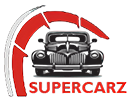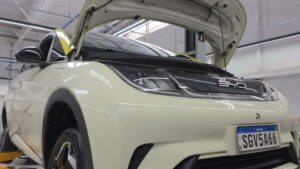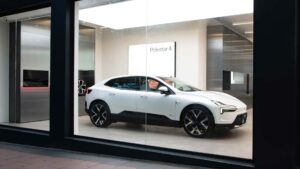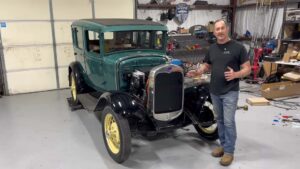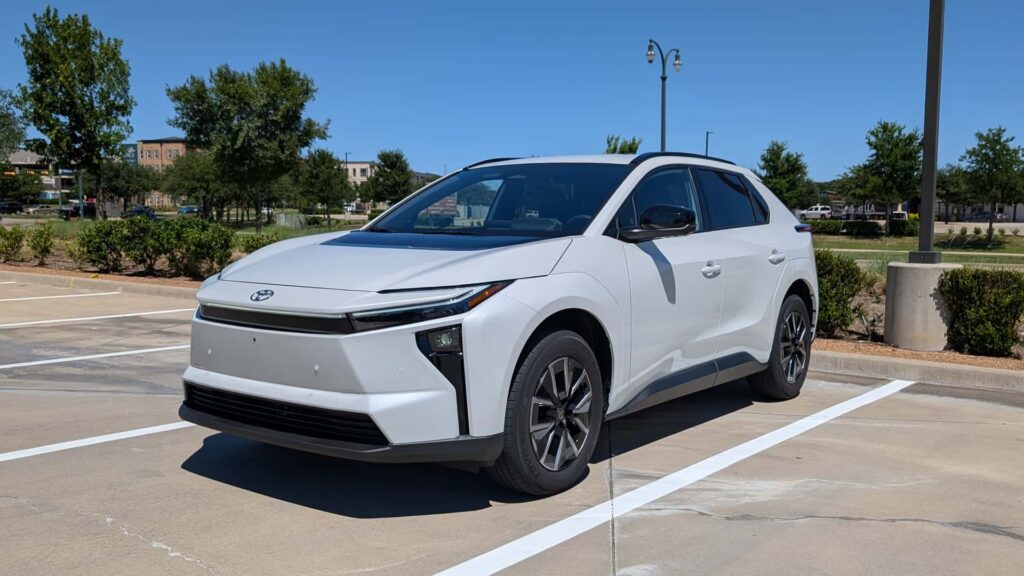
The Toyota bZ4X—now the bZ—has come a long way. What started as a mediocre taxi-spec electric vehicle has now grown up into something you might actually want to own. I drove it in Texas this week and nearly every aspect of it felt improved: It now has more range, more features and even a Tesla-style charging port right from the factory.
However, in one key area, it’s still the same as the outgoing version: maximum charging speed, which is still capped at 150 kilowatts. Slow charging speeds were one of the biggest complaints for existing bZ4X owners. For cabbies in cities like New York who drive the bZ4X all day, spending 45 minutes to an hour at a charging station can mean losing money and passengers.
So why hasn’t Toyota pushed the new bZ into a fast-charging EV like some of its rivals? It all comes down to production costs, Toyota said.

Photo by: Suvrat Kothari
“If we want a shorter charging time, we have to upgrade to an 800-volt system,” Daisuke Ido, the chief engineer of bZ Woodland and C-HR told InsideEVs in an interview. The bZ still runs on a 400-volt electrical architecture, which limits charging speeds. In simple terms, lower pack voltage equals lower charging speeds.
Toyota has some catching up to do here. Hyundai, Kia and General Motors have already embraced 800-volt architectures, unlocking faster charging and better roadtripping capabilities for some of their vehicles. The Hyundai Ioniq 5 charges quickly and doesn’t cost much more than the Toyota. Even Tesla, which also sticks with 400 volts on the Model Y, manages faster charging speeds thanks to more optimized systems.
“From a customer point of view, that can be costly,” Ido said. “The question is will the customer pay [extra] for it?”
Making EVs is capital intensive. Tesla is the only big name turning a profit on EVs here, and cost matters in an environment where EV incentives are being rolled back and tariffs are now in place. Toyota, despite its scale and financial muscle, isn’t rushing to eat those extra expenses—at least not yet.
Still, Toyota said the charging curve on the upgraded bZ is better, so it should hold higher charging speeds for longer durations. That should get the bZ from 10 to 80% state of charge in 30 minutes. That’s not blazing fast, but it should be better than before. (We haven’t done a full charging test yet, but it’s on our to-do list.)

Photo by: Suvrat Kothari
“The actual customer doesn’t wait for 30 minutes,” Ido said, implying that many customers do shorter charging sessions like 30-80% or 50-90%, and that’s something the bZ is now theoretically better at. It’s also worth noting that the all-wheel-drive version previously maxed out at just 100 kW. For the 2024 model year, Toyota bumped that to 150 kW.
For 2026, things get even better. The bZ now supports battery preconditioning to optimize pack temperature for faster charging and, crucially, comes standard with the North American Charging Standard (NACS) plug. That means seamless access to Tesla’s sprawling Supercharger network, which is a major upgrade to the day-to-day EV experience.
On the Superchargers, Toyota confirmed to InsideEVs that it will get plug and charge, which means you won’t have to fiddle with credit cards and smartphone apps after the initial payment account is set-up. Just plug in and walk away. Some other networks will also get plug and charge, and those will be disclosed at a later date.

Toyota’s NACS to CCS adapter for current and older model year vehicles to charge at Tesla Superchargers.
Photo by: Suvrat Kothari

Toyota’s CCS to NACS adapter for the 2026 model year vehicles to charge at non-Tesla stations.
Photo by: Suvrat Kothari
Then there are other big upgrades. The front-wheel-drive XSE Plus trim now offers up to 314 miles of range. Toyota’s app-based route-planning will help locate charging stations on the fly. And inside, the cabin finally feels premium and tech-forward.
We’ll see how it performs under real-world conditions—especially once Northeast winter hits—but based on first impressions, the bZ has grown into a more complete vehicle. It won’t be the fastest-charging EV on the market, but don’t let that overshadow the bigger picture.
Have a tip? Contact the author: suvrat.kothari@insideevs.com
